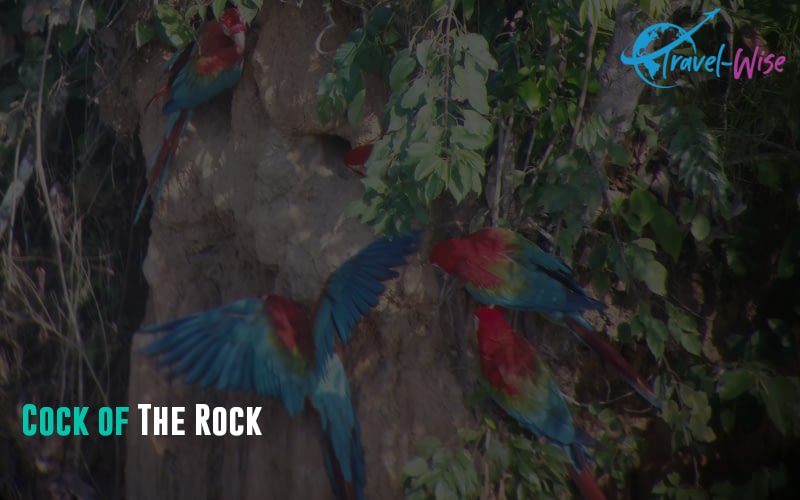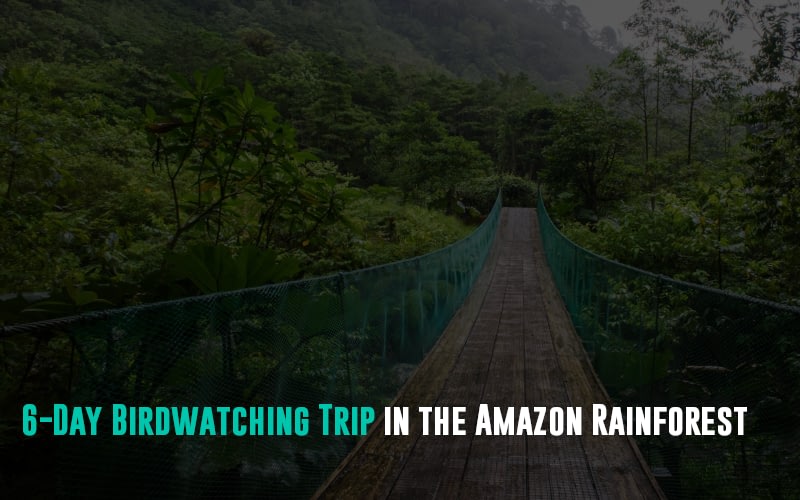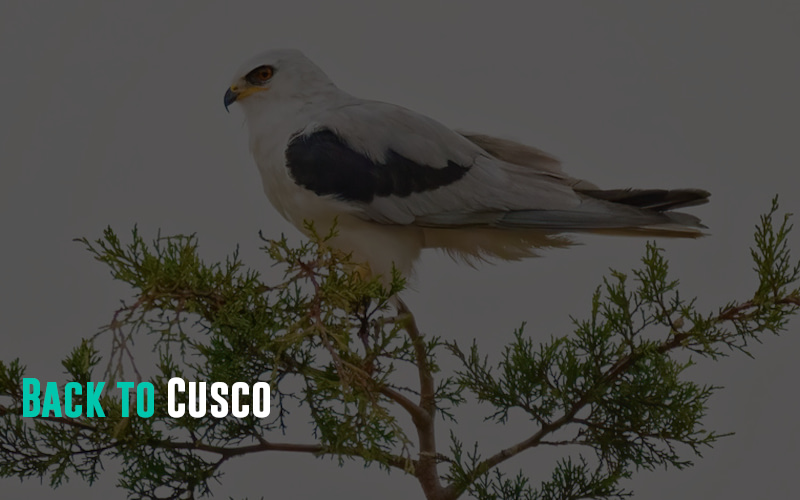Are you an avid birdwatcher? Or just interested in nature, birds, and wildlife? Whether you are new to birdwatching or a seasoned birder, a birdwatching trip in the Amazon rainforest will fulfill your quest for adventure. The amazing 6-day birdwatching itinerary in the Amazon Rainforest is what dreams are made of, as far as nature and bird-lovers are concerned.
Besides your camera, binoculars, and a travel journal to track all the birds you find, make sure you travel light to optimize your comfort during the six-day trip.
Feature Image Source
An overview of the Amazon Rainforest
The Amazon rainforest is the largest tropical rainforest globally and covers northwestern Brazil, Peru, Colombia, and other countries in South America. While there is much to explore, see, and experience in the expansive rainforest, the 6-day birdwatching trip in the Amazon rainforest takes you to Manu Biosphere Reserve. This is the world’s largest rainforest reserve in southeastern Peru.
Apart from its unparalleled biodiversity, this reserve is where you can marvel at breathtaking landscapes and nineteen different habitats. Over a thousand species of tropical birds have been recorded in this part of Peru. You can learn more through our country wiki guide if you want to read more about the Amazon rainforest.
The six-day itinerary for birdwatching trip in the Amazon Rainforest
Day 1: Wayqecha Biological Station
Start early from Cusco, Peru’s most visited historic city, to drive through the beautiful intermontane valleys. En route, you can spot the endemics such as Chestnut-breasted mountain-finch, Creamy-crested Spinetail, Golden-billed Saltator, Cinereous Conebill, Rufous-collared Sparrow, Band-tailed Seedeater, Ash-breasted and Peruvian Sierra-Finches.
Upon reaching Ajcanacu’s high mountain pass, descend the winding roads to the Manu foothills. New bird species appear all along the steep Andean slopes. Here is where you can spot high-elevation species of birds such as Bar-winged Cinclodes, Mountain Caracara, Puna Thistletail, Shining Sunbeam, Black-Throated Flower Piercer, and Tufted Tit-Tyrant.
The gorgeous cloud forests begin in the foothills, where you can watch for raptors such as White-throated and Variable hawks. It may also be possible to see the elusive Swallow-tailed Nightjar at night. Stay overnight at Wayqecha Biological Station.
Day 2: Cock of The Rock

Today, start early to head to Manu National Park. Get your binoculars and cameras ready to capture diverse species along the way, such as Blue-banded Toucanet and Crimson-mantled Woodpecker.
A wide array of colorful and swift hummingbird species are sure to vie for your attention, including Chestnut-breasted Coronet, Gould’s Inca, Violet-throated Starfrontlet, Amethyst-throated Sunangel, and Tyrian Metaltail.
Other species to watch out for are Montane Woodcreeper, Pearled Treerunner, Marcapata Spinetail, Streaked Tuftedcheek, Inca Flycatchers, Mountain Wren, Barred Becard, Spectacled Redstart, and Capped Conebill.
If you have always loved Tanagers, the Manu biosphere is the right place to be. You will find a host of Tanager species, including Golden-collared, Blue-and-black, Grass-Green, Blue-capped, Chestnut-bellied Mountain-Tanagers, Black-capped, and Superciliaried Hemispinguses. In addition, diverse species of Tyrants and the hard-to-spot red and white Antpitta, Band-tailed Fruiteaters and Trilling Tapaculo, and Sierran Elaenia may keep you busy. The night stopover is near the Park’s Cock of the Rock Lodge entrance.
You have a good chance of spotting hard-to-find and shy night birds such as Lyre-tailed Nightjar and Rufescent Screech-Owl night.
Day 3: Cloud Forest
The day is dedicated to exploring the Manu reserve’s cloud forest with lower temperate bird species. Here is where you can feast your eyes on Peru’s spectacular national bird, Rupicola Peruvianus, or the Andean Cock of the Rock. You can also spot stunning birds such as Slaty Gnateater, Black-billed Treehunter, Versicoloured Barbet, Yellow-breasted Antwren, and Blue-naped Chlorophonia.
Day 4: Amazonia Lodge
Enter the vast Amazonian lowlands at the foothills of the mighty Andes flanked by tall forests. You can see a rich assortment of species at the Amazonia lodge, such as the iconic Blue-headed Macaw, Bluish-fronted Jacamar, Rufous-crested Coquette, piculets, and Chestnut-capped Puffbird, among others.
You can view many birds from the comfort of the porch of your lodge as well. For example, if you are lucky, you may spot the highly sought-after but difficult-to-find Long-tailed Potoo, Buckley’s Forest Falcon, and Rufous-webbed Brilliant.
Day 5: Parrot Clay Lick

Visit the Parrot Clay Lick along the river bank to see gorgeous Macaws and Parakeets, including Blue-Headed Macaws, Chestnut-Fronted Macaws, White-Eyed Parakeets, Dusky-Headed Parakeets, Yellow-Crowned Parrots, and Blue-Headed Parrot. Then, embark on a motorized canoe to Machuwasi Lake, where a range of beautiful water birds awaits. These include Pale-eyed Blackbirds, Horned Screamers, and Rufescent Tiger-Heron.
Other species that are sure to capture your attention include Fasciated Antshrike, Bamboo Antshrike, White-Eyed Antwren, White-lined Antbird, Striated Antbird, Goeldi’s Antbird, and a host of other Antbird species.
Day 6: Back to Cusco
It is time for some final birding in the foothills and the lower cloud forest of the Manu biosphere before you take the road to Cusco. Many species can be found on this road, such as the Red-breasted Blackbird, Double-collared Seedeater, and White-tailed Kite.
Conclusion
Catch a flight back to your home with your mind, camera, and a heart full of memories of Peru’s breathtaking landscapes and stunning birds.
Travel planning is a bit hectic, but with some help, it can be a walk in the park. A top trip planner like Travel-Wise can help you with all your travel needs and make your vacation memorable.





